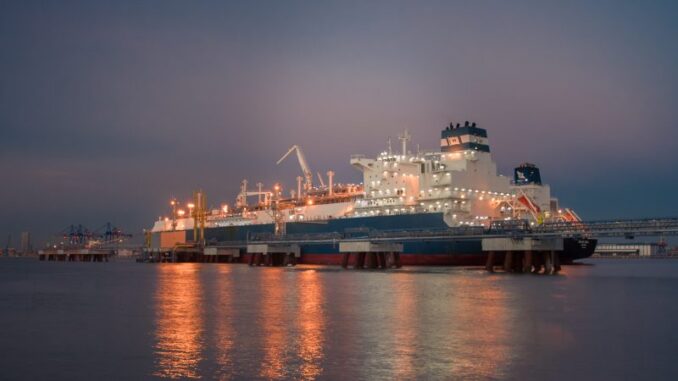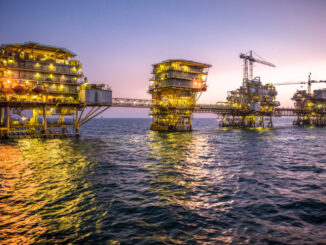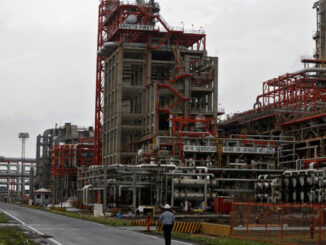
The German government inaugurated its first floating terminal on Tuesday (15 November), built in record time and intended to receive liquefied natural gas as part of Berlin’s plan to replace Russian gas, with the first regasification ship set to dock in mid-December.
Following Russia’s attack on Ukraine, a halt in the supply of gas from Gazprom, and the subsequent destruction of the Nord Stream 1 pipeline, Germany is missing about 50 billion cubic meters (bcm) of gas in yearly deliveries.
Hastily constructed infrastructure to facilitate the import of LNG is Berlin’s way out. LNG is supercooled and highly pressurised gas, turned into a liquid state fit for long-haul transport. Turning it back into gas requires specialised equipment – so-called regasification units.
On Tuesday, Olaf Lies, the economy minister of the German state of Lower Saxony, toured the port of Wilhelmshaven. After six months, construction of the infrastructure to support an inbound floating LNG terminal (FSRU) – a pier, pipelines, and electricity lines – was completed.
“Germany is looking to Wilhelmshaven today. The new LNG terminal is a big step towards a secure energy supply,” highlighted Lies, noting the early decision to focus on Wilhelmshaven and existing port infrastructure as the key drivers of speed, thanking “all planners, experts and construction companies involved.”
The completion in 194 days represented an unprecedented pace of construction in Germany, made possible by permitting exceptions and forgoing environmental impact assessments.
These FSRUs are essentially LNG tankers that can regasify LNG instead of merely transporting it.
In mid-December, the ship Hoegh Esperanza, built in 2018, is set to arrive. It was previously on three-year deployment in the Chinese port of Tianjin. A subsequent deployment in Australia had been cancelled on grounds of environmental concerns.
The FSRU, which is more than 280 metres long and 46 metres wide, can regasify a minimum of 5 bcm of LNG annually, with a maximum capacity of 7.5 bcm. It will feed the gas into the German gas grid through a pipeline with an annual capacity of 10 bcm.
A second FSRU is expected in late December, followed by another three next year. In total, the German government hopes to replace 50 to 60% of Russian gas through LNG in 2023.
Fear of environmental damage
Environmental groups, who were largely left out of the construction process, have voiced concerns about pollution.
Uniper, the ailing gas giant and operator of the infrastructure, is expected to clean its facilities using Chlorine, which will then be vented into the sea.
“A creeping chemical accident looms in Wilhelmshaven and at the other LNG sites,” explained Sascha Müller-Kraenner, CEO of Environmental Action Germany (DUH).
“According to the application documents, Uniper wants to discharge ten times as much biocide into the North Sea with its LNG terminal vessel as … was previously deemed acceptable at a comparable location,” he added.
They are in part backed by the new government in Lower Saxony, where the Greens are the junior partner and in charge of the environment ministry.
“There will be no environmental rebate” and there will be intensive monitoring, Christian Meyer, the green environment minister, said on Monday (14 November).
“If limit values are exceeded or nature is endangered, countermeasures must be taken,” he added.



